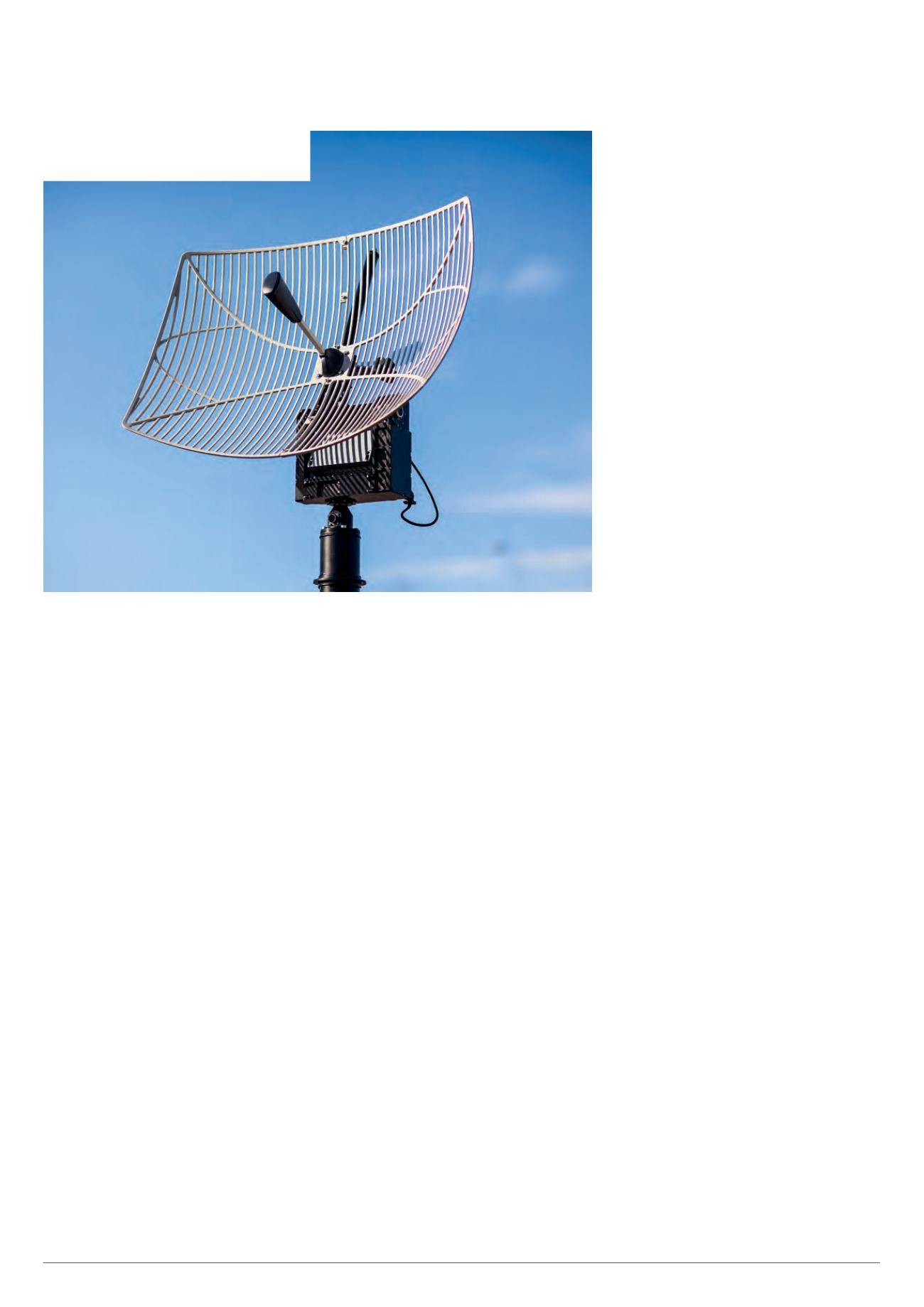

38
possible before the data is converted into
IP packets. Once the data is converted
into the IP protocol, serial and Ethernet
cables can be used to link to the GCS
over a considerable distance without
issues with slip rings and rotary joints
in the pan-and-tilt mechanism of the
antenna.
This avoids problems with running
the coax cables directly to the GCS for
converting the signal, which can limit the
rotation and positioning of the dish.
Portability
For a portable GCS system, other design
considerations include the backpack to
carry all the elements, the sunshade design,
the equipment cases, soft case, external
power, all the batteries and charging – and
all combined to make the GCS as easy to
use for the operator as possible.
Larger GCS system developers supply
a foldable frame or table to create a
workstation for long-endurance missions,
that can last for more than ten hours.
With three teams of flight operators
operating aircraft in two shifts in closed
airspace, one GCS operator has found
that the best way to have an operator
working efficiently for an eight-hour shift
is to have the video on the larger screen
and control and mapping on the smaller,
second screen.
Cloud resources
Control of a craft by a third party other
than the operator via a comms link
means customers can control the
camera through the Ethernet port on the
GCS. This is being developed for military
applications, as is using a dedicated
channel to keep the data secure.
However, it uses the same IP packets
that would be used in a public cloud
computing implementation. This brings
in a lot of delay issues, and the software
in the GCS has to distinguish between
critical commands for the craft and lower
priority streams such as video. That
means the packets in the stream have to
be prioritised.
For high-end gimbals with a fast
response, the latency of the signal
in the cloud can be a problem. With
a fixed-wing craft for example, if the
control signal is delayed by a couple
of seconds then it has already moved
on. Some additional smart functionality,
such as a moving target monitor on
the craft that can automatically re-
engage with a target and track it, is
therefore needed. The latency can also
be addressed with dedicated comms
channels in the cloud, coupled with
dedicated cloud computing resources.
You still need the local GCS though,
as an operator needs to prepare the
aircraft before take-off, and they will be
responsible for flying the craft safely.
This means operating the UAV can
be simplified down to packing and
unpacking the aircraft, rather than training
an operator in how to use a payload
such as a particular camera.
As a result, for example, a customer in
London can examine an oil or gas rig off
Aberdeen. Here, the operator of the UAV
gets paid for the video received rather
than the time it takes to capture that
video. This changes the business model
between the customer, who knows what
video they want, and the operator, who
knows the complexities of the aircraft
system.
Swarm control
GCS developers are also looking at how
to control a number of different types of
craft, from UAVs to ground vehicles, all
with different payloads, in a swarm.
In one scenario currently being tested,
the GCS mission software controls
five small UAVs at a time, calculating
the position and type of their cameras
relative to the target and flight time.
The GCS then coordinates the images
coming back from all five, for example
four with an electro-optic day camera
and one with a thermal camera. The
images are loaded into the GCS
software, and a mission that needs a
thermal camera for example then knows
to use a specific UAV for a specific target.
A flexible GCS design means
interfaces for unmanned ground
systems such as robots can be added
to the system. This allows swarm
control algorithms on the central
June/July 2016 |
Unmanned Systems Technology
The design of the GCS has to take into
account the connection to the tracking antenna
(Courtesy UAV Factory)









